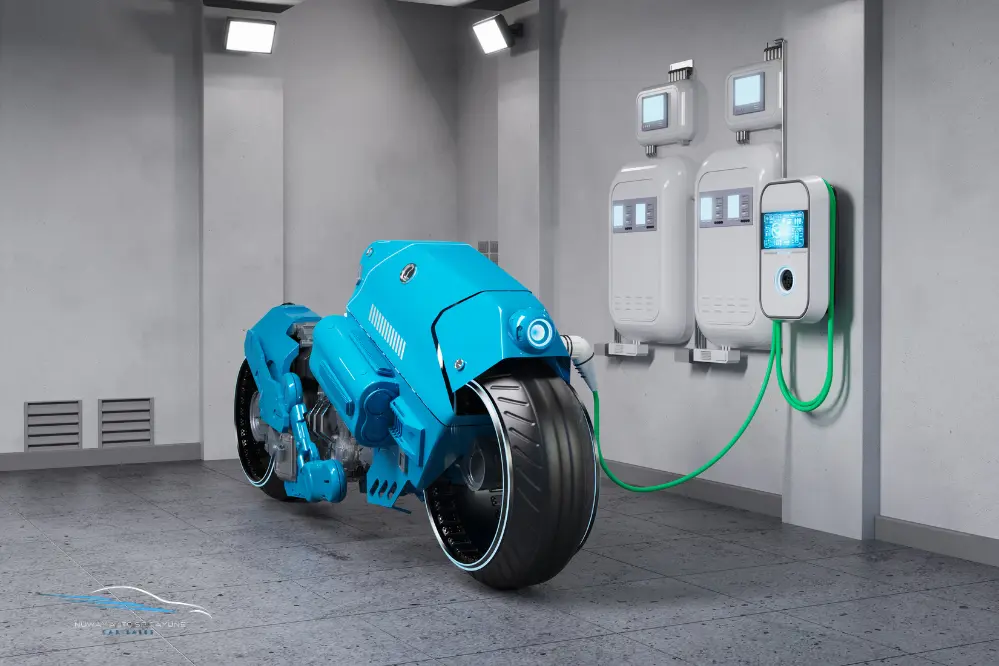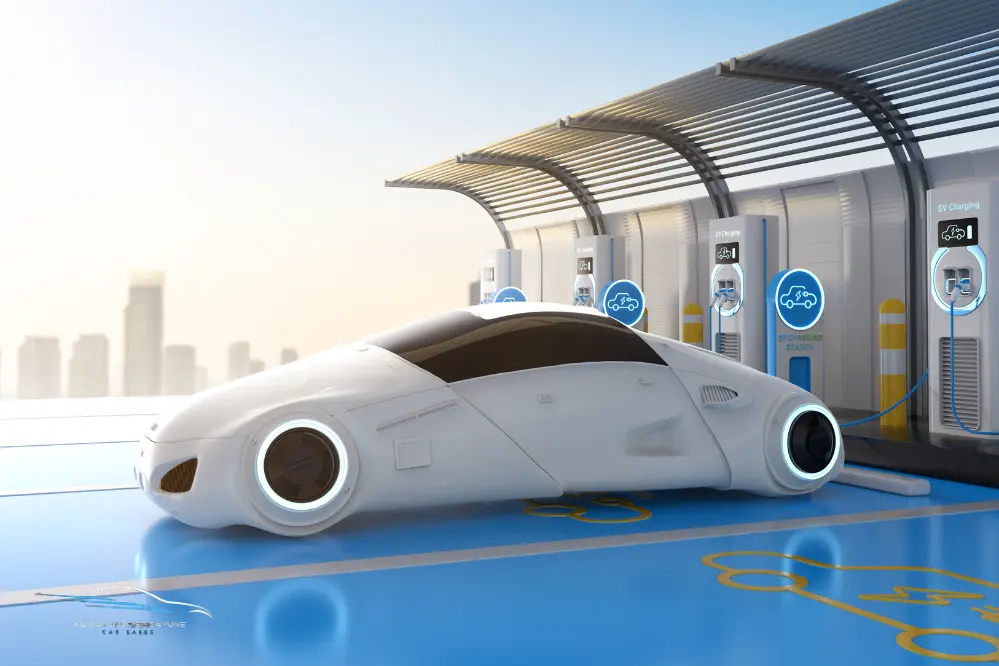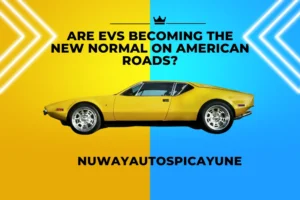Electric vehicles (EVs) are no longer a novelty; they’re becoming a regular part of the automotive landscape in the United States. Over the last decade, we have witnessed the rapid growth of the EV market, and it’s clear that these vehicles are here to stay. From improving technology to shifting consumer preferences, several factors are driving this trend.
As more people look for eco-friendly alternatives to traditional combustion engine vehicles, EVs are making their way into mainstream adoption, and the future of transportation is electric. Breakout Year for Electric Vehicles in the U.S. is going to be 2025.
The Rise of Electric Vehicles in the U.S.

Over the last few years, EV sales in the U.S. have skyrocketed. In fact, 2024 saw a 20% increase in EV sales compared to the previous year, adding nearly half a million electric vehicles to American roads.
EVs accounted for approximately 8.1% of all new car sales in the U.S. in 2024, up from 7.8% in 2023. Globally, the trend is even more prominent, with EVs representing about 20% of total car sales worldwide by the end of 2024. This significant rise in EV adoption highlights the growing shift towards sustainable transportation solutions.
EVs have evolved from being seen as a niche market to an essential part of the auto industry. One of the key drivers behind this rapid expansion is the increasing demand for cleaner, more environmentally friendly vehicles.
Rising concerns about climate change and the impact of greenhouse gas emissions from traditional internal combustion engine (ICE) vehicles have encouraged many consumers to explore EVs as a solution to reduce their carbon footprint. This demand is also being fueled by global trends and growing awareness around environmental sustainability. How Ford’s Bold Discounts has shaken the market to have range of consumers.
Factors Driving EV Adoption; EVs Becoming the New Normal

Several factors are propelling the rise of electric vehicles in the U.S. market. Here are the main contributors to this trend:
1. Environmental Awareness and Sustainability
There is a growing recognition among consumers about the importance of reducing their environmental impact. Electric vehicles, unlike their gasoline-powered counterparts, produce zero tailpipe emissions, significantly reducing air pollution and greenhouse gas emissions.
This aligns with the increasing awareness about the environmental impact of human activities, pushing individuals and corporations alike to opt for greener alternatives.
Governments around the world are also adopting stricter emission standards for vehicles, further encouraging the shift towards EVs. In the U.S., the government has set ambitious goals to reduce carbon emissions and promote clean energy, which further incentivizes consumers to buy electric vehicles.
2. Technological Advancements
Over the past few years, significant advancements in battery technology have improved the driving range of electric vehicles and reduced charging times. Initially, range anxiety (the fear of running out of battery power during a trip) was a significant barrier to EV adoption.
However, with the development of high-capacity lithium-ion batteries, many EVs now offer ranges comparable to gasoline-powered vehicles, making them practical for everyday use.
Additionally, the efficiency of electric motors and regenerative braking systems has improved, further enhancing the performance and reliability of EVs.
As technology continues to evolve, it is expected that the driving range of EVs will increase, while the cost of batteries will continue to decrease, making EVs even more affordable for the average consumer.
3. Government Incentives and Supportive Policies
The federal government and several state governments have introduced various incentives and rebates to encourage EV adoption. In the U.S., federal tax credits of up to $7,500 are available for eligible electric vehicle purchases.
States such as California, New York, and Washington offer additional incentives, including rebates, grants, and access to carpool lanes.
Furthermore, many states are implementing stringent emissions regulations, encouraging manufacturers to increase the production of EVs.
The Biden administration has set a goal for half of all new car sales in the U.S. to be electric by 2030, and with various policies in place, EVs are becoming more accessible to consumers.
4. Expanding Charging Infrastructure
One of the most significant hurdles in EV adoption has been the availability of charging infrastructure. However, in recent years, the expansion of public and private charging stations has made it easier for EV owners to recharge their vehicles.
With the Biden administration pledging billions of dollars to expand the EV charging network across the U.S., this issue is expected to improve dramatically.
Automakers, energy companies, and technology startups are working together to build more charging stations, especially in urban areas and along highways. The growing network of fast-charging stations means that drivers can now recharge their vehicles quickly, further alleviating concerns about long trips and recharging times.
5. Improved Consumer Perception
Over the past decade, the perception of electric vehicles has shifted significantly. While early EV models were often seen as impractical and expensive, today’s electric vehicles offer sleek designs, advanced features, and a range of options for all types of consumers.
Consumers can now choose from a variety of EVs, including sedans, SUVs, and even trucks.
Additionally, EVs are often equipped with cutting-edge technology, including autonomous driving features, advanced infotainment systems, and smart vehicle integration.
This blend of sustainability and high-tech features has made EVs a more attractive option for consumers, especially younger buyers who prioritize both environmental sustainability and technology in their purchasing decisions.
Challenges Facing the EV Market; EVs Becoming the New Normal
While the adoption of electric vehicles is rising, there are still challenges that the market must address. Some of the key barriers to widespread EV adoption include:
1. High Purchase Price
Although the cost of EVs has come down in recent years, they are still generally more expensive than their gasoline-powered counterparts.
While government incentives help offset the initial cost, many consumers still find EVs to be financially out of reach, especially in the case of high-end models from manufacturers like Tesla and Rivian.
However, as more automakers enter the EV market and battery technology continues to improve, prices are expected to decrease, making electric vehicles more affordable for the average consumer.
Additionally, the lower long-term maintenance costs of EVs (since they have fewer moving parts and don’t require oil changes) make them an attractive option for consumers in the long run.
2. Limited Range and Charging Time
While battery technology has improved, range anxiety is still a significant concern for many potential EV buyers. While many new electric vehicles offer ranges of over 200 miles on a single charge, long-distance travel can still pose challenges in regions with limited charging infrastructure.
The slow speed of some charging stations can also make long road trips inconvenient.
However, with advancements in fast-charging technology and more charging stations being built, these issues are expected to become less of a concern as EV adoption increases.
3. Limited Model Variety
While automakers are rapidly expanding their EV lineups, the variety of models available is still limited compared to traditional gasoline-powered vehicles.
While sedans, hatchbacks, and SUVs are available, consumers looking for trucks or high-performance sports cars may not find the same variety in the EV market.
Fortunately, this is changing as manufacturers like Ford, Rivian, and Tesla are introducing electric trucks and sports cars, expanding options for consumers.
Are EVs Becoming the New Normal?
As of 2024, the electric vehicle market in the U.S. continues to grow steadily. While traditional gasoline-powered vehicles still dominate the market, the increasing number of electric vehicle options, growing government incentives, and improvements in infrastructure suggest that EVs will soon become the new normal on American roads.
The automotive industry is undergoing a transformation, and the future of transportation is electric. With ongoing advancements in EV technology, government support, and consumer interest, electric vehicles are poised to become an integral part of the American automotive landscape.
Conclusion
EVs are becoming a staple on U.S. roads as their benefits become more evident to consumers. The shift towards electric vehicles is being driven by multiple factors, including environmental concerns, technological advancements, and supportive policies.
While challenges remain, the future of transportation in the U.S. is undoubtedly electric. As the market matures, we can expect even more models, greater affordability, and more accessible charging infrastructure, making EVs an even more viable option for consumers.
FAQs
1. What are the most affordable electric vehicles available in the U.S.?
Some of the most affordable EVs in the U.S. include the Nissan Leaf, Chevrolet Bolt EV, and the Mini Cooper SE. Prices for these models start below $30,000 before tax incentives.
2. How long does it take to charge an electric vehicle?
The time it takes to charge an EV depends on the charging station and the battery size. On a fast charger, EVs can be charged to 80% in 30 minutes, while a standard home charger may take several hours.
3. Are electric vehicles more expensive to maintain than gasoline vehicles?
No, EVs are generally cheaper to maintain than gasoline vehicles because they have fewer moving parts and don’t require oil changes. However, battery replacement can be expensive.
4. Will electric vehicles become the dominant mode of transportation in the U.S.?
Given the growth in EV adoption, government incentives, and advancements in technology, it’s likely that electric vehicles will become increasingly dominant on American roads in the coming years.
5. Are EVs better for the environment?
Yes, EVs produce zero tailpipe emissions, making them much cleaner than gasoline-powered vehicles. This helps reduce air pollution and greenhouse gas emissions, contributing to a cleaner environment.
If you’re considering making the switch to an electric vehicle, now is the perfect time to explore the various options available. Visit our website to learn more about the latest EV models, government incentives, and how EVs can benefit both your wallet and the environment. Make the change today, and join the growing movement towards cleaner, greener transportation!
Visit nuwayautospicayune.com to browse new EV arrivals, compare models, or schedule a test drive. NuWay Auto is committed to helping you find the right electric car that fits your lifestyle and budget—without the stress. Take your next step toward the future of driving today.

